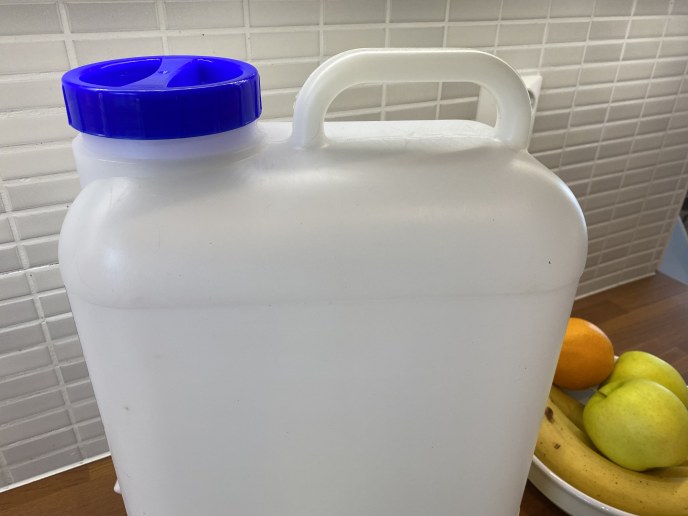Power Outages & Water Services

Prepare in advance for power outages also when it comes to water. On this page, you can find instructions for both how to prepare for and what to do during a power outage.
What is electricity needed for in water services?
In the production of tap water, electricity is needed to pump water from the Oulujoki river, treat it in water treatment plants and further pump it into the water supply network. In addition, electricity is needed to convey waste water, because waste water is conveyed in the sewer network with the help of pumping stations. Electricity is also used for wastewater treatment.
In homes, waste water usually flows forward with the help of gravity, but it does not continue its journey during a power outage, because the pumping stations may not be working.
How a power outage affects water services
Tap water will usually be available
A power outage is probably not visible the majority of water users because water towers allow water to be delivered to properties by gravity and a large number of water supply plants are equipped with backup generators. However, water pressure may be lower than normal, especially on the top floors of apartment buildings. However, water supply does not usually stop immediately during a power outage.
A power outage does not affect the quality of tap water, so tap water is safe to drink even during a power outage.
Sewerage will work for a while
Sewerage will work partially. In order to reduce the risk of wastewater flooding, it is advisable to avoid using the drain during a short power outage, such as taking a shower or bath, and washing dishes and laundry. We also recommend not flushing the toilet during a power outage. The greatest risk of sewer flooding is in properties with basements.
Wastewater treatment will work partially
Because sewerage will keep working partially during a power outage, less wastewater will flow to the wastewater treatment plants than normally. Wastewater treatment plants can store incoming wastewater during a short power outage.
The aim is to secure the electricity supply of wastewater treatment during short power outages. Backup power can be used if necessary.
Preparing water for the home emergency supply kit and containers for carrying
Despite the preparation of water supply plants, power outages can interrupt the water supply.
Therefore, every household should have clean drinking water in store for a few days, 6–10 liters for each person.
In addition, households should have clean buckets or canisters with lids for carrying and storing water.
Read more on the 72 hours website.
What to do during a power outage:
- Avoid using water, such as showering, bathing, and washing dishes and laundry.
- Avoid flushing the toilet.
- Do not pour water down the drain. For example, use a bucket under the tap if you have to run water from the tap.
Read more on the Finnish National Rescue Association's website.
Tips for properties
- If the property has its own pressure booster pump, water pressure on the top floors will be lower than normal during a power outage.
- The functionality of any flood prevention devices on the properties should be checked and verified before power outages. If wastewater has to be pumped from the property into the sewer network, draining water into the property's sewer will quickly cause the sewer to flood the property, unless the pump is equipped with a backup power source.
- Even if the quality of the supplied cold tap water is good, properties seeking energy savings must ensure that the temperature in their domestic hot water systems is not lowered in a way that creates favorable conditions for the growth of legionella bacteria.
- During freezing temperatures, water pipes and meters can freeze if they are placed somewhere where the temperature can drop to below zero. The best way to prevent freezing is to insulate water pipes well and keep the space for the water meter warm.
